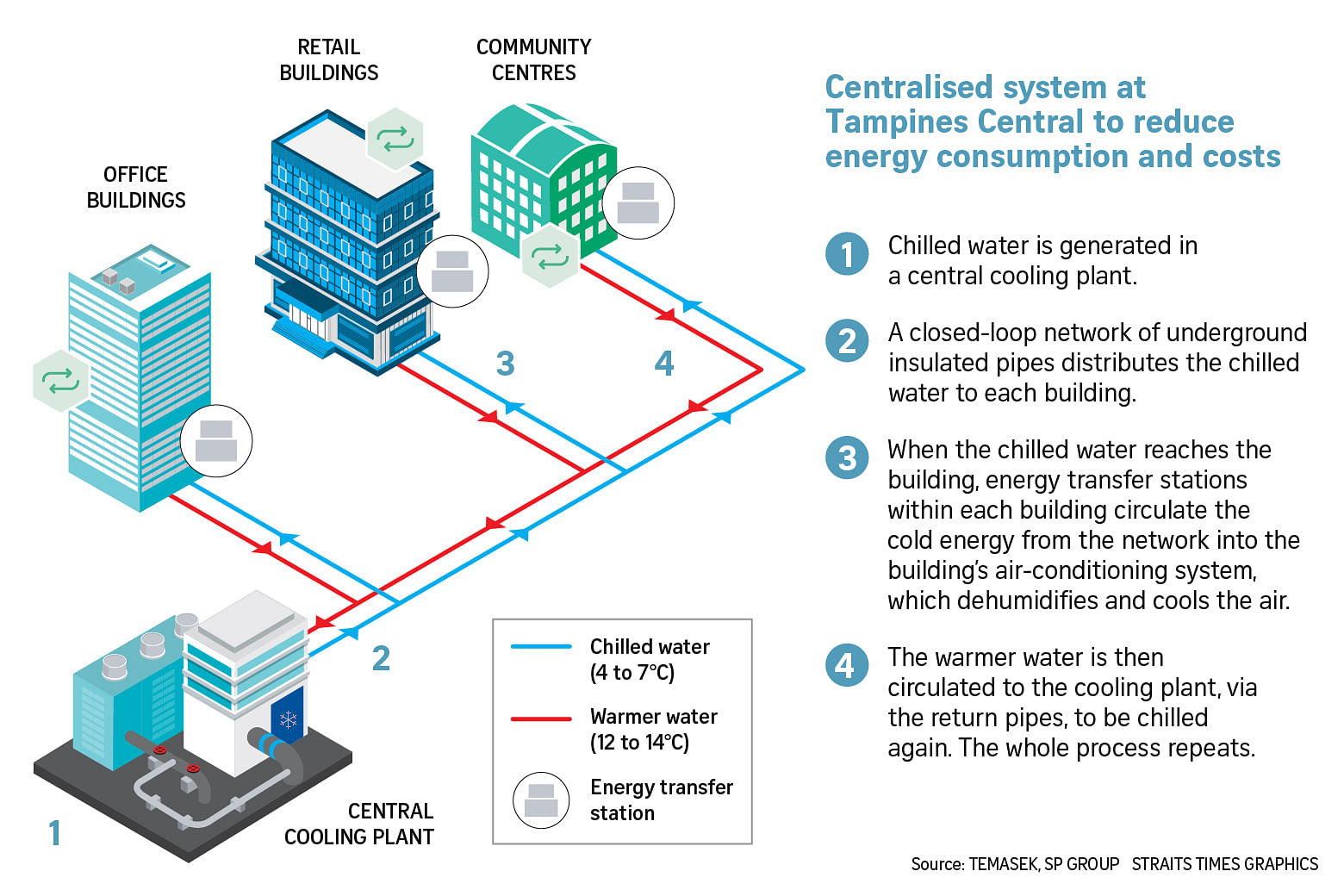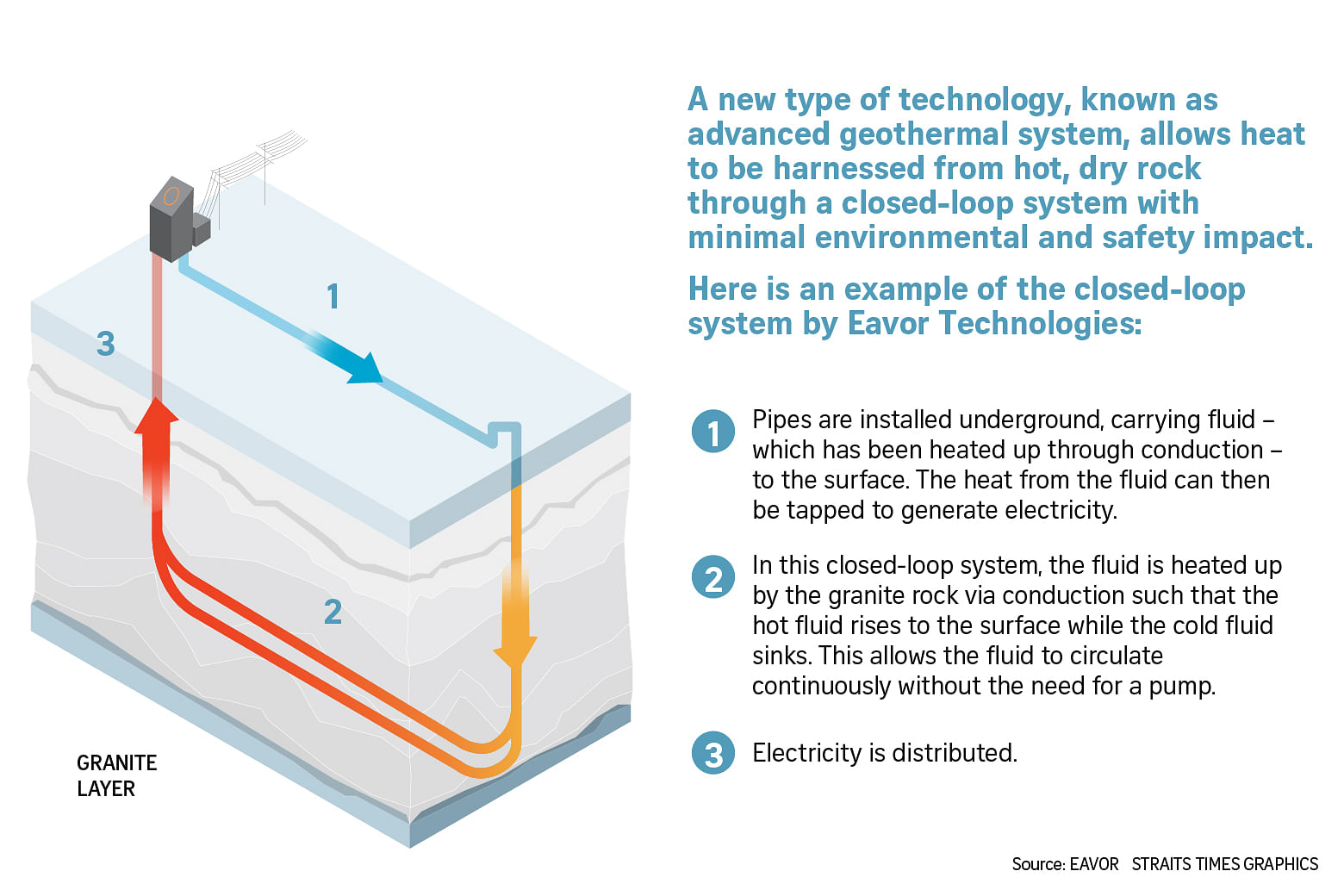Bold initiatives are in the works, as anxiety over climate crisis grows
Bold initiatives are in the works, as anxiety over climate crisis grows
Written by Genevieve Chan, Content Studio
The climate clock is ticking, and there is concern among our youth about what tomorrow could bring. What are companies doing to help reduce carbon emissions and avoid warming above 1.5 deg C?

Climate change will bring more extreme weathers, hotter temperatures and other climate-related risks. It is also fuelling fears among youth: A global survey found that three-quarters of young people are “frightened” of the future due to climate change. PHOTO: GETTY IMAGES
What Mr Ethan Stewart saw on a leisurely trip to Bedok Jetty in 2018 remains seared in his memory. For the first time, he felt the raw extent of our environmental problems.
“It didn’t really hit me until I saw the waves hit the jetty — and the mass of trash that accompanied it,” says Mr Stewart, 22. “Plastic bottles, bags and more.”
As a Gen Zer (commonly defined as those born between 1996 and 2012), the English and linguistics student grew up under a cloud of concern over climate change.
What Mr Stewart saw that day was more than just an eyesore. The ocean is one of our largest natural carbon sinks, absorbing more carbon dioxide than it releases.
Studies like a 2019 report by US-based not-for-profit Centre for International Environmental Law have long warned that plastic waste dumped into the ocean impacts hopes of turning the tide on climate change.
It disrupts the marine ecosystem’s ability to remove and store carbon dioxide from the atmosphere.
The amount of plastic waste in the ocean could nearly triple by 2040, with up to 27 million tonnes of waste dumped into the ocean each year, a 2021 study by the United Nations Environment Programme estimates.
For Mr Stewart, the jetty incident fed his sense of insecurity. “It made me think: Even if I did my best on a personal level, what good would it do? It wouldn’t clean the ocean entirely, even if I behave responsibly for the rest of my life.”
Add to that the current pandemic uncertainties and a more volatile world, and it is little wonder that Mr Stewart and his peers fear for their future.
Future shock
Such sentiments are not anecdotal. A global survey led by Britain’s Bath University in September last year found that three-quarters of young people aged between 16 and 25 are “frightened” of the future due to climate change.
This climate anxiety has very real effects on their lives. The same report found that four in 10 of them are hesitant to have children due to the climate emergency.
“I am definitely fearful,” says Ms Woo Qiyun, 24, digital creator and sustainability consultant. “It’s a rational fear, because I know that there is a very high certainty that I am going to live through the worsening effects of climate change.”
With her background, the environmental studies graduate understands that climate change will bring more extreme weather events like floods — more devastating than those in Malaysia last month — storms and droughts, hotter temperatures and other climate-related risks.
She elaborates: “We’ll also see a rise in food prices, impacts on our fertility, comfort levels and more.”
Scientists have been sounding the alarm for decades, and the call to tackle the climate crisis has grown more urgent.
The August 2021 report by the Intergovernmental Panel on Climate Change (IPCC), called it a “code red for humanity”. The Panel, made up of scientists and industry experts, warned that our average global temperature is likely to reach or breach 1.5 deg C above pre-industrial levels by the time Mr Stewart and Ms Woo turn 40.
How much hotter will it get? If we continue generating high levels of carbon emissions, the IPCC estimates that we could reach 2.4 deg C by 2050 and 4.4 deg C by 2100.
Three months after the IPCC’s code red notice, Climate Action Tracker, an independent research body that tracks climate pledges and policies of countries, revealed that the progress made at the 2021 United Nations (UN) Climate Change Conference (now known as COP26), is not enough.
The Climate Action Tracker is a collaboration between Germany-based research institutes Climate Analytics and the New Climate Institute.
Even with the new 2030 pledges, the world would still generate about twice the emissions by 2030 than what is required to limit warming to 1.5 deg C.
In the best-case scenario, that brings us to a 2.4 deg C increase by 2100, reported the Climate Action Tracker.

Why is it important to limit the warming of our planet to 1.5 deg C? What difference would half a degree make? Here is what the IPCC estimates:
2 deg C
-
-
- 37%
-
…of the world’s population will be exposed to extreme heat waves at least once every 5 years. This percentage could drop to 14 per cent if warming is limited to 1.5 deg C
-
-
- 60 million
-
More people living in urban areas will be exposed to water scarcity from severe drought by 2050, if the warming of our planet increases from 1.5 deg C to 2 deg C
-
-
- More than 2x
-
By 2100, the percentage of insects, plants and vertebrates that lose more than half of their geographic range will more than double if warming reaches 2 deg C, compared to 1.5 deg C
-
-
- 32 to 80 million
-
Number of people globally exposed to flooding from sea level rise by 2100, compared to the estimated range of 31 to 69 million in a 1.5 deg C warmer world
Future stock
Despite his initial feelings of hopelessness, Mr Stewart has found ways to cope; he does mindfulness exercises and aims to do his best to limit his own carbon footprint.
Ms Woo, frustrated with climate inaction, is doubling down on efforts to raise awareness. She runs @theweirdandwild — an Instagram page where she pairs her technical expertise with creativity to make climate and environmental science more accessible to her 11,900 followers.
However, there is a limit to what individuals can do in their daily lives. “The remaining action has to come from systemic change, brought about by regulators, governments and corporations,” she says.
It helps that sustainability has become mainstream. How climate action is implemented will shape the landscape going forward, she believes, especially as companies and investors place greater importance on sustainability.
“The global dialogue on net zero has become the new normal,” says Mr Steve Howard, Chief Sustainability Officer at investment company Temasek.
“Addressing climate change is a collective responsibility,” he says, adding that partnerships can play to each partner’s strengths, and create a positive impact that is greater than the sum of its parts.
Temasek is stepping up on climate action. The investment company has two goals: To reduce its net portfolio carbon emissions to half its 2010 levels by 2030, and to reach net zero by 2050.
“Climate action to Temasek is not just a cost, but also an investment opportunity,” explains Mr Howard. “While there may be near-term transition costs in the move towards net zero, communities, businesses and governments will reap more sustainable returns in the long term.”
“We are also committed to working with our portfolio companies on their decarbonisation journeys for change, rather than divest them. Divesting simply transfers the carbon problem to someone else, but does nothing to support the necessary transformation.”
The investment firm aims to use its capital to catalyse transformative solutions to help pave the way to net zero for a more liveable future.

The reset
Our food choices matter. Sustainable food options, like alternative proteins, typically have less environmental impact than their traditional counterparts as they can be made using fewer resources.
Local plant-based food producer Growthwell Group makes alternative proteins designed for the Asian palette. The company is bringing more options to the table, such as by turning chickpea protein into alternative seafood products.
US-based food start-up Eat Just is producing cultured meat — meat products made from growing animal cells instead of slaughter. It has different types of cultured chicken products available, including chicken breast, which will soon be found in some Singapore hawker centres.
Besides investing in these solutions, Temasek has established the Asia Sustainable Foods Platform to help scale the production of alternative proteins, and speed up the commercialisation of sustainable foods in Asia.

The reset
Singapore has already seen temperatures rise higher than the global average. Temperatures here are 1.8 deg C higher than in 1948, with more warmer days and nights, says data from the Meteorological Service Singapore, a division within the National Environment Agency.
Hotter days and nights could lead to a higher dependence on air-conditioning, increasing energy consumption and resulting carbon emissions. For a more liveable future, we need new, eco-friendly ways to beat the heat.
To help transform Tampines into an eco-town, Temasek and SP Group are working on a centralised cooling system for seven existing buildings in Tampines Central. This includes Tampines Mall and Our Tampines Hub.


The reset
Energy powers our lives. We need it for almost everything we do.
“Energy is at the heart of the climate change emergency and it must be at the heart of its solution,” said Ms Patricia Espinosa, executive secretary of the UN Framework Convention on Climate Change (UNFCC), last year.
“A swift and broad transition to renewable energy will be essential to achieve the emission reduction goals laid down by the Paris Agreement,” she said.
With the goal of catalysing transformative change, Temasek is looking beyond just wind and solar to new and emerging decarbonisation solutions. This includes Eavor Technologies.


If you have a passion for fashion, consider the fashion industry’s environmental impact.
The production of clothing and footwear generates emissions, and requires a significant amount of water. It takes about 7,500 litres of water to produce one pair of jeans, says the UN — about 10 years’ worth of water, if you drink two litres a day.
Besides buying fewer clothes, how else can we balance our need to dress well and mitigate the impact? Some companies in which Temasek invests are making sustainable materials with fewer resources.
For example, sustainable materials company Bolt Threads ferments bioengineered proteins in a lab to produce a biodegradable silk. It can then be knitted into fabrics and garments.
Biofabrication company Modern Meadows uses yeast to produce collagen — a structural protein found in animal and human skin. The collagen ferments to form “liquid leather”, which can be made into handbags or clothes of any shape or size.
To make a significant impact, such sustainable materials will have to be priced competitively. Currently, they tend to be more expensive, but Bolt Threads and Modern Meadows believe scale will bring prices down.

This is the third of a four-part series brought to you by Temasek
Mar 03 2022
CATEGORIES
FEATURED POST

Sustainability and Climate Change – A Global Approach
There are no posts!
| Mon | Tue | Wed | Thu | Fri | Sat | Sun |
|---|---|---|---|---|---|---|
|
28
|
29
|
30
|
1
|
2
|
3
|
4
|
|
5
|
6
|
7
|
8
|
9
|
10
|
11
|
|
12
|
13
|
14
|
15
|
16
|
17
|
18
|
|
19
|
20
|
21
|
22
|
23
|
24
|
25
|
|
26
|
27
|
28
|
29
|
30
|
31
|
1
|
